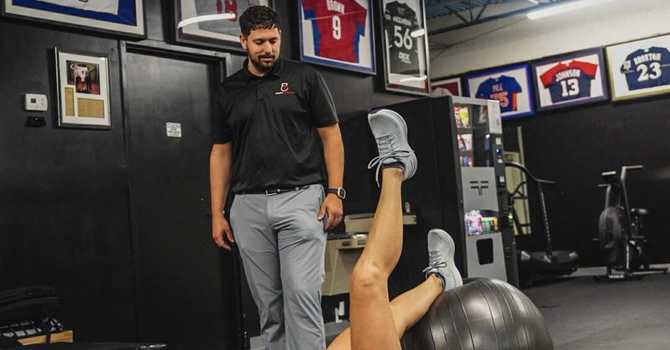
Back in the day when someone got hurt or was experiencing pain, they were advised to rest and maybe ice their injury by a clinician. Nowadays, we realize that advice was a load of bologna and harmful to some. Using heat and moving is actually what people should have been recommended to do, however, they were not. As our knowledge of what works and doesn’t work in healthcare continuously expands, it can become information overload for the average person.
For example, movement and heat are the new recommendations instead of ice and rest. Well…how much do you move/exercise? What is “good” and what is “bad”? How do you know if you are doing too much or not enough? It’s a lot, isn’t it? But that’s what this is for. To answer these questions.
First, let’s start by saying after any injury or having been experiencing pain for quite some time, it’s a smart idea to get a proper evaluation and diagnosis from a conservative management practitioner such as a chiropractor or physical therapist. This will simplify your process of knowing what is going on and what to do to help with it. But for those of you who haven’t been able to see someone, this information will absolutely still help.
The basic framework of rehabilitation following pain and injury includes symptom management, activity management, exposure to stressors, and capacity development. The beauty of rehab is that for each patient, every single step is unique and individualized to that patient. That is why it is so hard to provide blanket statements of “if you have X, you should do Y”. For the sake of this blog, it is important to understand these general guidelines may or may not apply to you so take everything with a grain of salt. Especially the symptom modification portion!
Step 1: Symptom modification means anything that directly affects symptom reduction in the short term. This can be anything from manual therapy, to using a brace/sleeve, to taking medication. Our recommendation is to not use the shotgun approach. Don’t take 2 Advil, foam roll, use 3 different topical analgesics, and do the stretch you found on Instagram. Stick to one to two things for a few days and see if it helps. If after a few days, it doesn’t move on to something else. Then identify and address factors that perpetuate symptoms and modify or remove them. If it hurts to bend down all the way, then it is a smart idea to push back cleaning up the kids rooms to a few days later until you feel better. Finally, emphasize the things in your daily life that actually promotes recovery. Get 8 hours of sleep, eat healthily, avoid drugs and alcohol, and get some sunlight if possible. I know, it’s cliché to hear all of that, but it’s a step most forget about following pain or injury.
Step 2: Activity management is very broad and takes some effort on your end but can absolutely help short and long-term. As we said, it is recommended to move around and still be active following pain and injury. Well, the rule of thumb is, that if it hurts at the moment it is too intense. If it hurts several hours or a day later, it was too much volume (ie too many sets or too long of distance). At Strength & Spine, we recommend the stoplight system to our patients.
During exercise:
0-2= Good to continue
3-6= Proceed with caution
6+= Back Off/Stop
Using the system, our patients understand it is okay to have some symptoms while exercising, however, they need to be conscious of what is too much and what is safe.
Step 3: Now you’ve been exercising and modifying activities for some time and are feeling better. It’s time to use exercise and movement to expose you to more stressors. In this step, the goal is to reintroduce move load, advanced movements, etc. to help build confidence in that movement and to reduce fear of a certain activity. For example, if you’ve had knee pain and it hurt or was scary to jump, this is where you would HAVE to reintroduce that activity at small loads to teach yourself and the brain that it is okay. This is one of the most fun parts of our jobs because we love to see the smiles on our patient's faces after they perform an activity without pain or with significantly less pain for the first time in a while.
Step 4: Capacity development aka continuously build yourself up to improve upon the physical quality that was rehabbed and to reduce the risk of potential reinjury. This is the part where you are feeling great but still need to maintain some habits to continuously maintain the progress achieved during rehab. Here is where most patients sink or swim. The patients that discontinue the recommendations are the ones we see back in the office after a month or two. The ones who stick with it are the ones who we don’t see back until sometime totally new comes up (these are our favorites )
In conclusion, when pain and injury come follow these four steps.
1) Manage your symptoms through targeted activities that reduce symptoms
2) Manage and modify your activities for the time being
3) Expose yourself to stressors to rebuild your confidence and reduce fear-avoidance behaviors
4) Develop your capacity to continue to get stronger and reduce your risk or reinjury
If this is what you’re looking for in a clinician, then Strength & Spine Chiropractic is the place for you. We are always accepting new patients and would love to be a part of your rehab journey. Call us today at 727-228-3030 or schedule at strengthchiro.com to get started!



